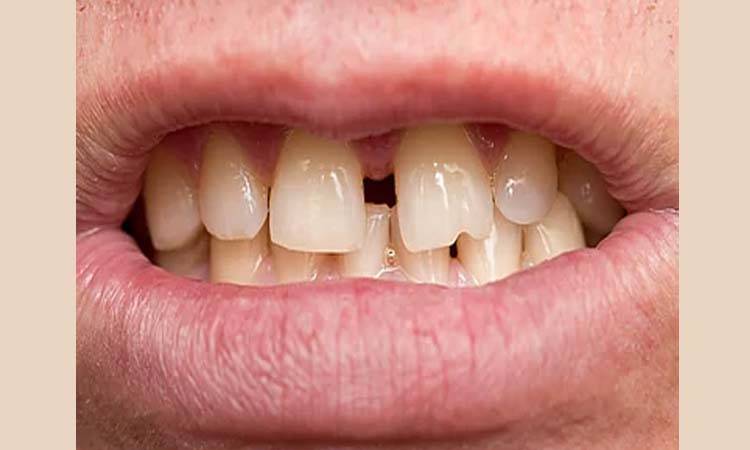
Interference of a mesiodens with surrounding teeth may necessitate future dental or orthodontic treatments, which is why it is critical to identify and treat a mesiodens as early as possible.
What is a mesiodens (extra tooth)?
Humans possess two dentitions in their life, a primary one with 20 teeth and a secondary one with 32 teeth. Supernumerary teeth are uncommon additional teeth that appear in the human dentition. A mesiodens happens to be the most common type of extra or supernumerary tooth.
A mesiodens is found in the front of the maxilla, i.e., the upper jaw, located between the two central incisors or behind them. They assume a conical shape and are more commonly found in the secondary dentition than the primary dentition. Mesiodens are rare findings with a prevalence of 0.15 to 1.9% in the general population. They are more common in men as compared to women.
What causes mesiodens?
While the exact cause of mesiodens is still relatively unknown, factors such as genetics, environmental influence, and more may have played a role in the matter. Certain health conditions have been associated with the occurrence of mesiodens as well, including:
- Cleft lip and cleft palate
- Gardner’s syndrome
- Cleidocranial dysplasia
- Orofaciodigital syndrome
Multiple mesiodens, or mesiodentes, may also appear in the dentition, although they are an infrequent finding.
Health risks of having a mesiodens
The presence of mesiodens can lead to various potential dental complications.
Interference with other teeth
One of the primary issues that present with mesiodens is that of interference with other surrounding teeth. These include:
- delayed eruption or displacement of surrounding teeth
- increased crowding
- misalignment of teeth (malocclusion)
- diastema formation
- dilaceration of surrounding teeth
- root resorption of surrounding teeth
Cyst formation
A cyst is essentially a sac of fluid. An unerupted mesiodens may contribute to the formation of a dentigerous cyst. Moreover, a small dentigerous cyst is not a matter of much concern. However, if the cyst grows in size, it may result in swelling or displacement of surrounding teeth.
Eruption in the nasal cavity
In some cases, mesiodens may erupt in the nasal cavity instead of the mouth. Although a rare finding, the eruption of a mesiodens inside the nasal cavity may result in pain, swelling, and nasal obstruction.
When and how to diagnose mesiodens?
Typically found during early childhood, dentists detected the most after routine dental exams and X-rays. They may appear in children as young as six years since they are primarily associated with adult dentition. They present with problems like crowding, delayed eruption of surrounding teeth, and misalignment. Interestingly enough, approximately 79 to 91% of mesiodens cases remain impacted.
Mesiodens removal
Most cases of mesiodens involve tooth extraction. In rare cases, practitioners may recommend observing them if they are in the primary dentition and are not resulting in any complications.
Dentists may remove it using a simple extraction procedure or a complex surgical extraction involving an incision and stitches. The extraction process is only undertaken after it has been observed to ensure that it is not affecting any surrounding teeth. In most cases, additional orthodontic treatment is expected following its removal.
Consult a dentist if you think that you or your child has a mesiodens. Prompt diagnosis and treatment can help prevent any future dental complications.

Dr Sonia Sameen
The author is contributing writer at Dental News Pakistan and can be reached at live.va939@hotmail.com

